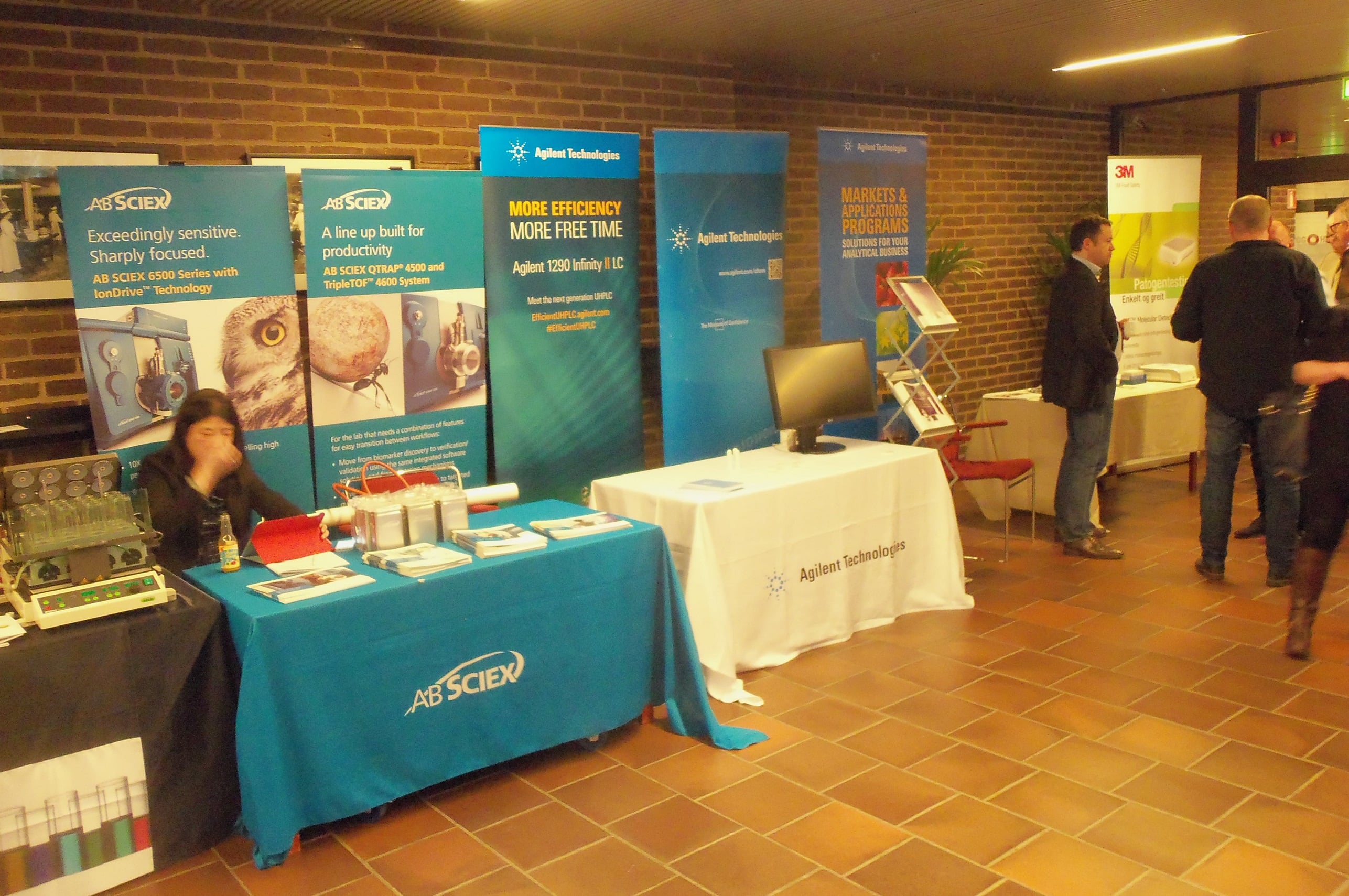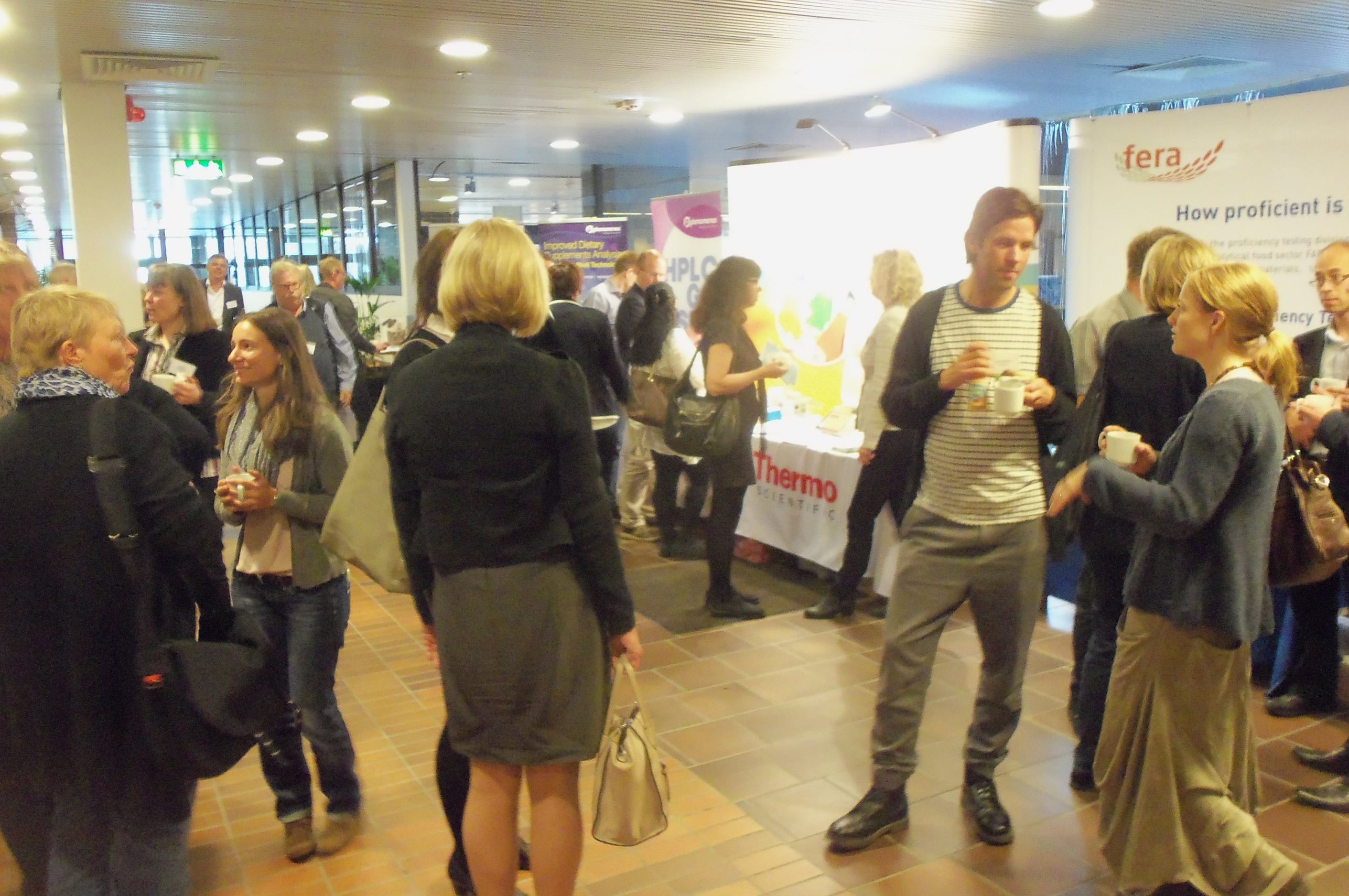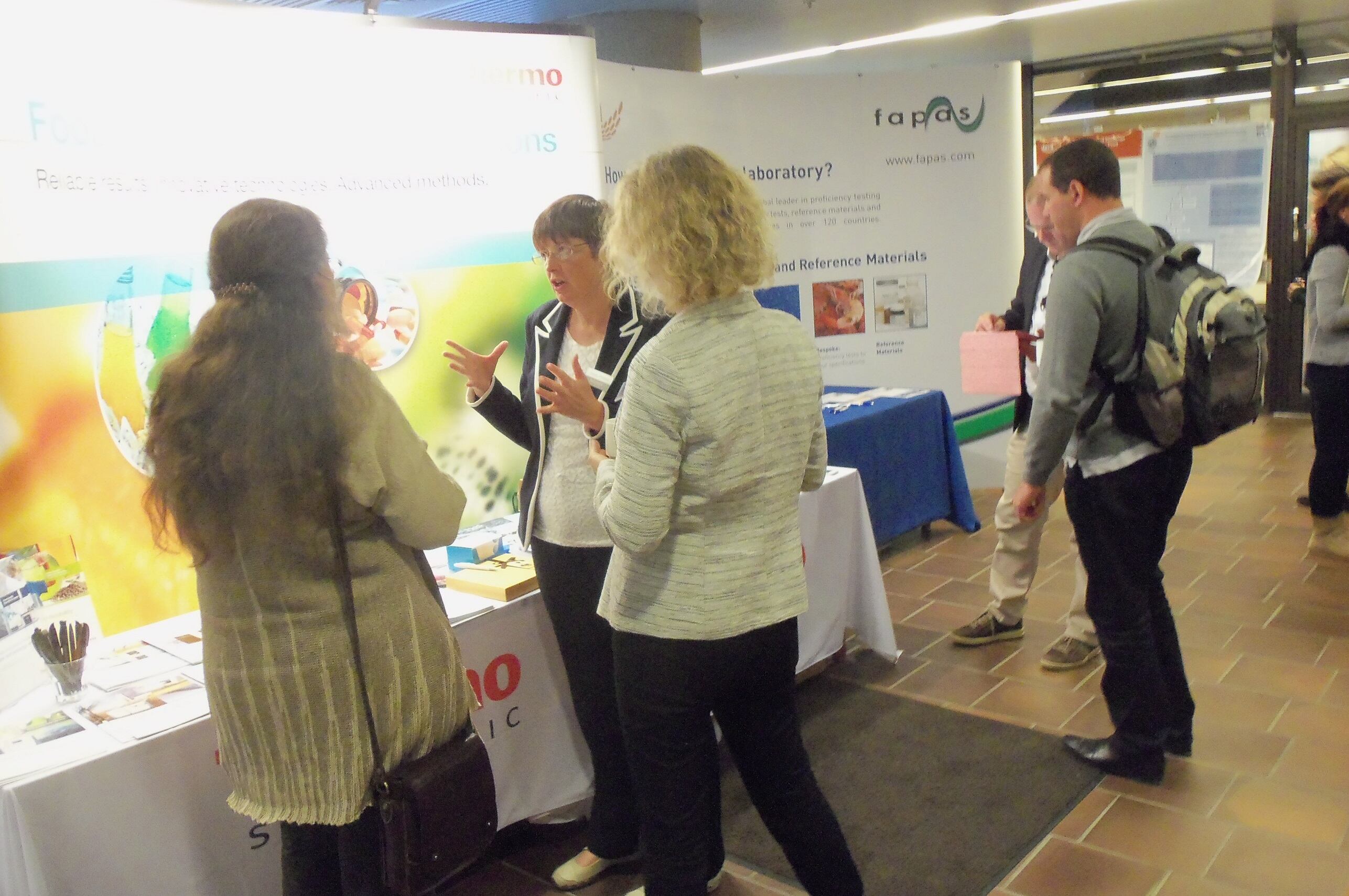The AOAC Europe – NMKL – NordVal International Symposium in Stockholm gathered experts from national food agencies, universities, industry and certification organisations to look at future challenges in food analysis.
The two day event, called ‘Food Labs in a Crystal Ball – Future Challenges in Food Analysis’ also saw 3M Food Safety, Agilent Technologies, FAPAS, Food Diagnostics, Randox Food Diagnostics, R-Biopharm, Sciex and Thermo Fisher Scientiic exhibit.
About the organisers

AOAC Europe is the section of AOAC International – a non-profit scientific association which publishes standardised, chemical analysis methods designed to increase confidence in results of chemical and microbiologic analyses.
Nordval performs third-party reviews and certifies alternative chemical and microbiological methods for testing including food.
The Nordic Committee on Food Analysis (NMKL) consists of chemists, microbiologists , sensory analysts and statisticians from Denmark , Finland , Iceland, Norway and Sweden.
NordVal International, which reviews and certifies methods, was incorporated in NMKL in 2007.
VKM, Nestlé and AOAC International
Jan Alexander, professor at the Norwegian Scientific Committee of Food Safety (VKM), told attendees a multidisciplinary approach is needed to meet future challenges in food safety and analysis.
He identified linking source with disease in human outbreaks as one challenge, adding there is a move from culture based to culture independent techniques (based on DNA/RNA profiles or sequences).
Dr Erik J.M. Konings, Nestlé Research Center and president of AOAC International, said there is a need for harmonized international guidelines for calibration, validation and monitoring of all types of alternative methods.
Physico-chemical alternative methods used by Nestlé include near infrared spectroscopy (NIR/FT-IR), x-ray fluorescence spectroscopy (XRF), nuclear magnetic resonance spectroscopy (NMR), refractometry, thermo-balance halogen/infrared and capacitance microwave resonance.
Alternative analytical methods contribute to quickly checking composition of raw material, quality of product along the production line, consistency of finished product, rapid release of finished items based on quality and safety criteria and reduce wasting time and non-compliant products, he added.

Dr Taran Skjerdal, Norwegian Veterinary Institute, Norway, presented work on Listeria monocytogenes in salmon intended to be used as sushi and sashimi, as part of the Baseline EU project.
The criteria for Listeria monocytogenes in ready-to-eat products (EU: 2073/2005) is 100 cfu/g on the last day of shelf life.
Researchers found that of samples below 10 cfu/g at day 0, many were above 100 cfu/g at day 14 so they recommended 2 cfu/g as a reasonable limit.
Dr Skjerdal said knowledge about growth potential, realistic storage conditions and use of food after sampling is one of the things needed otherwise authorities may go back to a zero tolerance level.
Genome sequencing focus
Jørgen Schlundt, professor, Dep. of Management Engineering at the Technical University of Denmark, said with whole genome sequencing (WGS) diagnosis of microorganisms, outbreak investigation, surveillance and prevention and microbiological research will improve.
The Global Microbial Identifier (GMI) wants a global system of DNA genome databases for storing WGS data, identifying relevant genes and comparing genomes to detect outbreaks and emerging pathogens.
He said this needs to be done soon as separate databases with separate interphases and algorithms are developing which will lead to difficulties in agreeing on common formats and leave developing countries behind.
Schlundt added concerns about national security and safety, national regulations, potential for misuse, who owns the data and commercial confidentiality are challenges to the database.
Allergens and harmonising standards
Dr Bert Popping, Merieux Nutrisciences, said a review of current methods for allergens is urgently needed.

On the positive side, validated methods include hazelnut and peanut by ELISA and PCR with the matrix chocolate and celery and lupine by PCR with the matrix sausage.
However, problematic areas include processed materials containing egg and milk.
Dr Popping said expanded validation is needed by commercial assay developers, a central list of cross specificities, cross-reactivities and development of independent confirmatory methods including NGS, LC-MS/MS and MALDI-TOF-TOF.
Sven Qvist, chairman of NordVal International, talked about harmonization with ISO/FDIS 16140-2:2015 for the validation of alternative methods.
He said AFNOR, AOAC, MicroVal and Nordval had a part to play in the standard.
Qvist added the importance of validation included ensuring reliable analytical results, showing equivalence with reference methods, accordance with EU regulation and in compliance with manufacturers’ claims.
